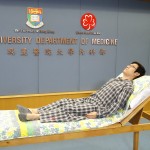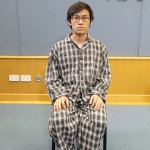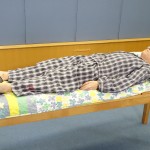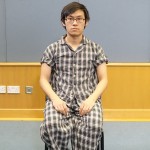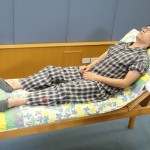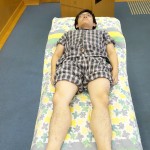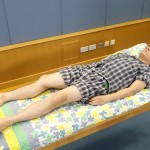Positioning
For general examination, examining the cortical function and upper limbs, the optimal position would be to sit the patient upright at an approximate 45-60º angle to the bed (Figure 1). Of course, if the patient is ambulatory, the patient can also be examined whilst sitting comfortably on a chair (Figure 2). The optimal position for examining the lower limbs would be to lie the patient flat in a supine position (Figure 3).
For cranial nerve and neuro-ophthalmological examination, the optimal position is to sit the patient out on a chair with the examiner sitting directly opposite to the patient (Figure 2). However, this may not be possible if the patient’s mobility is impaired. In which case, sitting the patient upright at an approximate 45-60º angle to the bed would also be satisfactory (Figure 1).
- Figure 1
- Figure 2
- Figure 3
Exposure
The ideal exposure for a neurological examination is to have the patient with his or her shirt and trousers off, so they are only wearing their underwear. However, in the real-life setting, this is rarely required and can be quite inconvenient. For examination of the upper limbs, the patient’s shirt should be gently rolled up to above the elbow so that the upper arm is exposed (Figures 4 to 6). Whilst for examination of the lower limbs, the trousers should also be rolled to a level above the knee, so that the thigh muscles are exposed. The shoes and socks should be removed for examination of the lower limbs (Figures 7 and 8).
The degree of exposure would also depend on the symptoms of the patient. For example, if the patient presents with proximal muscle or limb girdle weakness, it would be worthwhile to ask the patient to take his or her shirt and trousers off such that the upper and lower limb girdles could be properly examined for any muscle wasting, weakness and sensory impairment.
- Figure 4
- Figure 5
- Figure 6
- Figure 7
- Figure 8
 HKU E-learning Platform in Clinical Neurosciences HKU eLearning Platform in Clinical Neurosciences
HKU E-learning Platform in Clinical Neurosciences HKU eLearning Platform in Clinical Neurosciences

